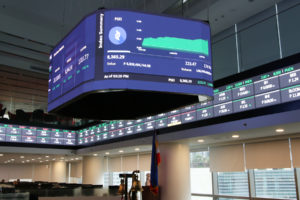Lending by the country’s large banks grew faster for the ninth straight month from August 2021, as the domestic economy further opened and recovery from the COVID-19 pandemic gained traction.
Preliminary data at the Bangko Sentral ng Pilipinas (BSP) for May transactions show that outstanding loans of universal and commercial banks—net of short-term loans to the BSP—increased by 10.7 percent to P9.97 trillion, outpacing April’s 10.1 percent.
Month-on-month, lending by universal and commercial banks in May grew by 1 percent over the April volume.
The growth of outstanding loans to residents, net of short-term loans, took a similar path, picking up pace at 10.6 percent to P9.69 trillion compared to 10 percent in April.
In particular, loans for production activities grew by 10.8 percent in May to P8.8 trillion, faster than the 10.3 percent recorded a month earlier.
This went along with increases in credit for real estate activities (16.4 percent to P2.1 trillion); manufacturing (16 percent to P1.1 trillion); information and communication (27.1 percent to P519.9 billion); wholesale and retail trade, repair of motor vehicles and motorcycles (6.2 percent to P1.1 trillion); and construction (12.3 percent to P389.1 trillion).
The growth in consumer loans to residents also revved up to 8.5 percent in May from 6.7 percent in April as credit card loans and salary-based general purpose consumption loans increased.
On the other hand, the growth of outstanding loans to nonresidents slowed to 12.5 percent in May from 13.5 percent in April.
According to the Rizal Commercial Banking Corp. (RCBC), May’s results showed the fastest pace of growth in lending in two years or since May 2020 at the height of COVID-19’s first salvo.
RCBC chief economist Michael Ricafort said outstanding loans in May reached a total of about P9.8 trillion or more than half of Philippine gross domestic product (GDP).
“Loan demand back to double-digit growth levels as seen recently could lead to faster GDP growth and could already support or justify any further hikes in the local [BSP] policy rate amid higher inflation and the expected aggressive Fed (United States Federal Reserve) rate hikes in 2022 that could lead other global central banks to follow,” he said.


